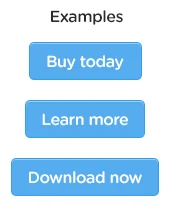What and when to Tweet?
Lesson 5 of 8 of using Twitter to promote your business
What to post on your Twitter profile?
It's important to put some thought into what you tweet. A good place to start is to ask yourself: who is the type of person actually following you? Why did they follow you? What type of content do they want to see? How can you offer them value?
Research
Everything about your business can be improved by getting a deeper understanding of your customers, both current and prospective.
Product development and sales will benefit greatly if you know what your customers are looking for. Similarly, this type of information can be used to drive your marketing campaigns — and even the content of your future tweets.
Once you have a reasonable Twitter following, ask your followers what type of content they want to see you post on Twitter.
Engage
Questions are valuable not only as a means of crowdsourcing information, but also as a way of encouraging your followers to respond and open up a dialogue.
Getting your followers engaging with your content means you’ll grow followers with an invested interest in your business. They will be more responsive to the tweets you send, as well as any special offers and/or new products you put out there.
Your engaged followers will post responses and retweets on their own timeline, which means your content will get exposure to Twitter users who wouldn’t otherwise have seen your content. All of this can help you steadily build your Twitter following.
Share
No matter how good you are at producing your own content, never rule out sharing content from outside of your business/website.
When you see content that is of really high quality and written by respected people within your industry, don’t hesitate to share it with your followers. Share links to content, retweet useful posts, and follow people on Twitter who regularly share high-quality information.
When you do share, it’s a good idea to include the author of the original information and/or mention the source website’s @username in the tweet, to credit them for the content. People appreciate this, plus, it’s a good way of opening up a dialogue with other companies and potential contacts within your industry.
The golden rule of sharing content is to never share something that you wouldn’t be happy writing yourself. Your followers will expect a certain degree of quality from you, and if you share content that is below that standard, it will reflect poorly upon you.
Offer opinion
Your followers look to you as a leader in your field, as someone with inside knowledge of the products and services you offer. As such, they’ll also listen to your opinion.
Comment upon relevant news stories, create and share blog posts that take a new and different stance relative to a hot topic, and look for ways to impart fresh insight to your readers.
If you become particularly good at this, you will find that more people will retweet your posts and share your content. If you then inject a bit of controversy or humour (where appropriate), you will almost certainly trigger a discussion, or maybe even a debate.
Related: Finding and engaging industry influencers on social media.
Promote your business
As long as you’re providing genuine value to your Twitter followers, they really won’t mind if you promote your own tweets and publish your own links from time to time.
Your timeline shouldn’t be filled with link after link to your own website, but your followers will expect to see some promotion, and will be disappointed if they are not told of special offers that could save them money!
Be human
Customers quite often want to get to know the person they are dealing with, not just the organisation. Whilst you should avoid tweeting about everything little thing you get up to, you can add personalisation that is relevant to your industry, your products, and your business.
Be friendly and conversational. Twitter is usually quite an informal means of communicating, so take the opportunity to help humanise your brand.
Call to action
A call to action (CTA) gives your readers clear instructions about what you want them to do. “Download our free eBook today” is a lot more persuasive than “here is an eBook”. It may seem obvious, but try to include a call to action in every single tweet. The best calls to action are short, simple and not too obvious.
Some common calls to action you may see on Twitter include:
- Buy something
- Download something
- Check out this something
- Do something now/today
Check out our guide to improving your CTAs and conversion rates.


When to Tweet
Twitter success isn’t driven solely by what you post. When you post also plays a part. You need to consider who you are targeting, and when they are most likely to see your updates.
Twitter is extremely popular with mobile users, and as such, it can be difficult to pin down an exact time to post. This will vary depending upon your target market, but experiment with different posting times, and see what works best for you.
Data suggests that Twitter users are mostly likely to click on your tweets in the early morning hours, however evenings and late nights seem to be the times when tweets receive the most favourites and retweets on average.
Scheduling Tweets
There are plenty of tools out there, such as TweetDeck, HootSuite, and Buffer, which enable you to compose tweets and then schedule them for release at a specific time.
This is very useful if you have already planned your content for the week ahead – just don’t forget what you have scheduled, and make sure you still respond to tweets as you usually would.
